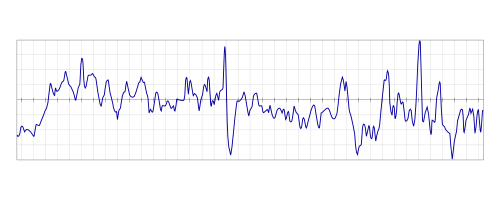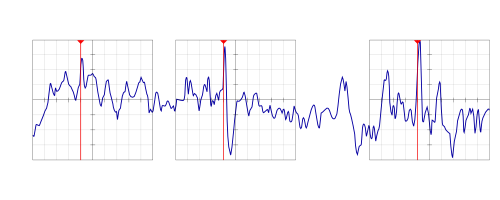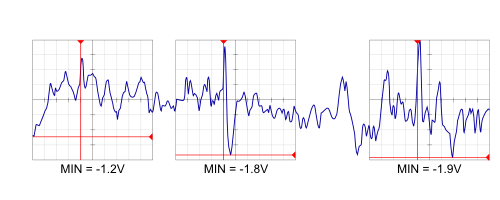Question :
Can I use my oscilloscope to do data logging?
Réponses :
The answer depends on the type of data logging you need. We will define three different types of data logging for the purposes of this FAQ: Seamless data logging, Triggered data logging, or Measurement data logging.
Seamless Data Logging
What:
Seamless data logging is the simplest to understand, and can be directly related back to paper tape data loggers. In this type of logging, you start the test, and data points are taken at consistent intervals for a long period of time. The full set of data can then be analyzed for anomalies or issues.
Why:
You would want to use seamless data logging when it is imperative that there be no gaps larger then the sample intervals in the data. For example, you may be measuring a power line, to make sure that there are no unexpected variations in the power.

Figure 1: A seismograph is a good example of seamless data logging
Pros: You save all data in a given time period seamlessly.
Cons: You have to sift through all of that data yourself. Most oscilloscopes cannot do seamless data logging because they are trigger-based instruments. The instruments that can do this usually do not have the fastest bandwidths or sample rates.
Triggered Data Logging
What:
Because most oscilloscopes are trigger based, seamless data logging is usually not possible. Oscilloscopes became most useful when you can define a certain type of event as a trigger. That means that the scope will not start recording data until an interesting event has occurred. When the trigger occurs, the oscilloscope continues recording until all post-trigger memory is filled, then all the data in the record, meaning all pre- and post-trigger data, will be written to the screen. This has the net effect of making “snapshots” of your data, with the event of interest centered on the trigger point.
Why:
In triggered data logging, triggering is used to make sure that you only record the interesting events in the waveform. For example, you might choose this method when you are tracking the waveshape of a particular repetitive event. You do not care what happens between the events, only what happens just before and just after the event.

Figure 2: Triggered data logging will have gaps in the data. Note the red vertical line indicates the trigger point. Digital oscilloscopes can have the trigger point positioned anywhere in the record.
Pros: Less data to sort through
Cons: You may not know what event you would like to trigger on. Less data is saved, so some information may be lost.
Measurement Data Logging
What:
Sometimes the only important parameter to log may be a measurement, like a peak-to-peak measurement, or a rise time measurement. In this case, just the measurement can be logged, which means there is less data to sort through, and it takes less time to transfer the measurement data then waveform data, so the repeat rate can be much faster.
Why:
You may use this if you need to make sure that your event never exceeds a certain value. For example, you are monitoring the power output of a transmitter, and just need to make sure you do not exceed specifications.

Figure 3: Measurement data will make a measurement on each acquisition, and save the measurement.
Pros: Much less data to sort through, repeat rate can be much faster, because less data is being saved.
Cons: Still requires a triggered waveform capture. Much less data is saved, so some information may be lost.
Ways to do each type of data logging
- Seamless data logging cannot generally be done on oscilloscopes, because oscilloscopes are inherently triggered devices. If you require seamless data logging, you will need to look at either an analog data logger, or a digitizer instead of an oscilloscope.
- Triggered and measurement data logging can be done with an oscilloscope, in conjunction with software that will save the data to a computer. Wavestar, the TekXL toolbar, and SignalExpress will do both types of logging, or you can write a program that will save data over time. Wavestar and SignalExpress can be downloaded from our Software Download section.
Cette FAQ concerne :
Aucune série du produit
Produit :
Numéro de la FAQ 63256
Afficher toutes les FAQ »
